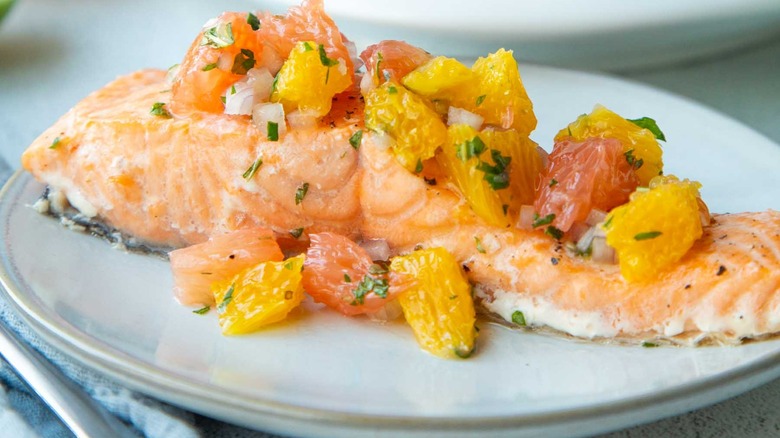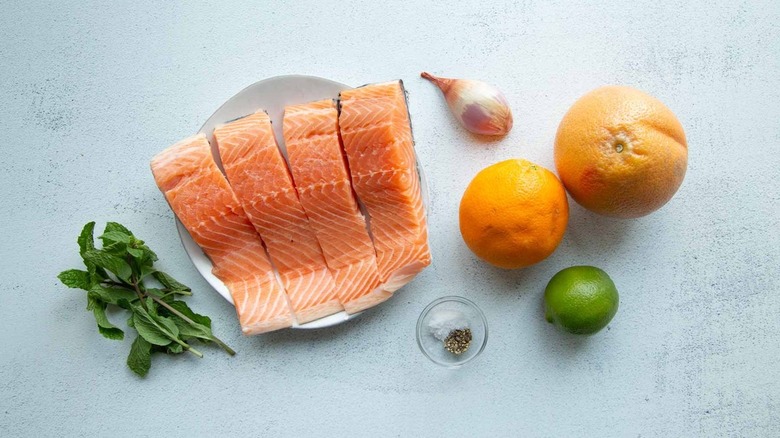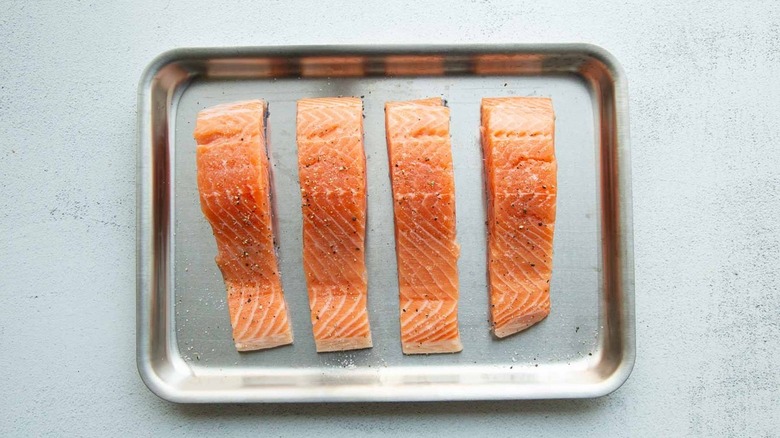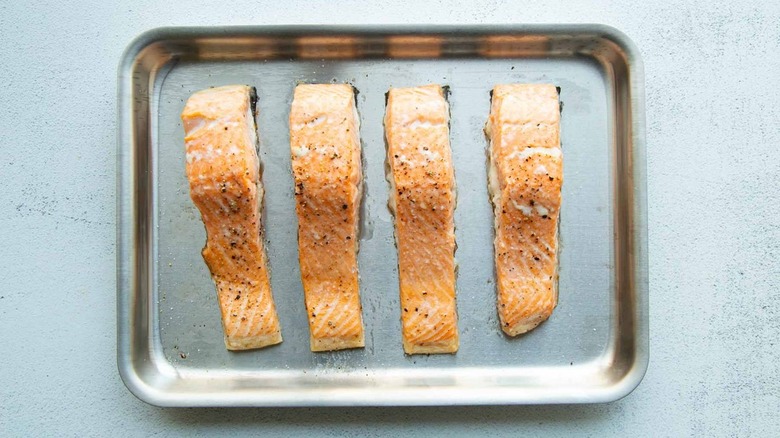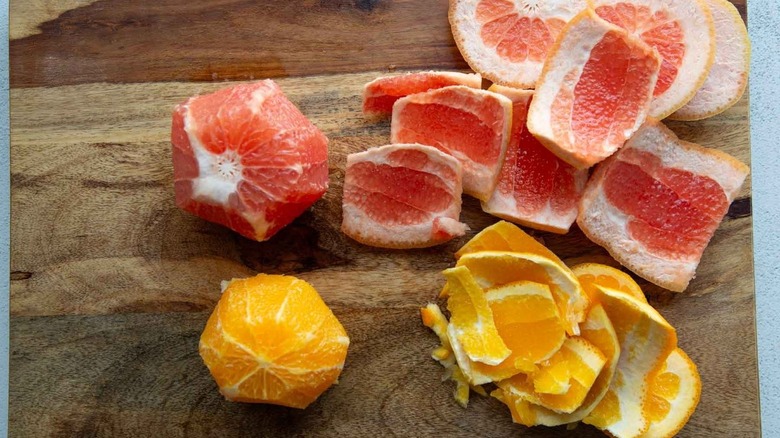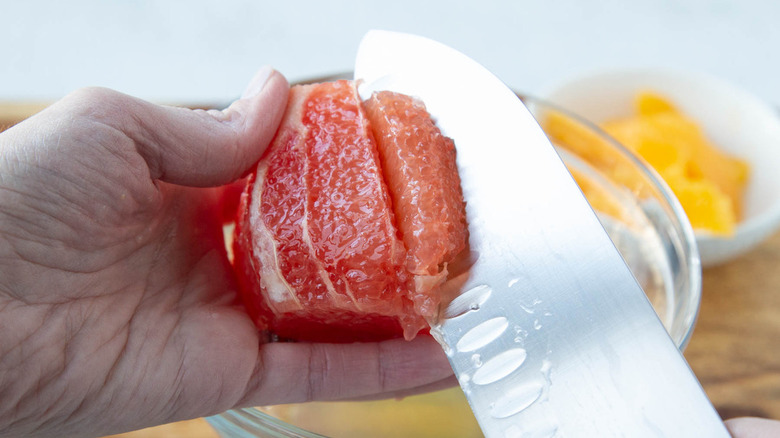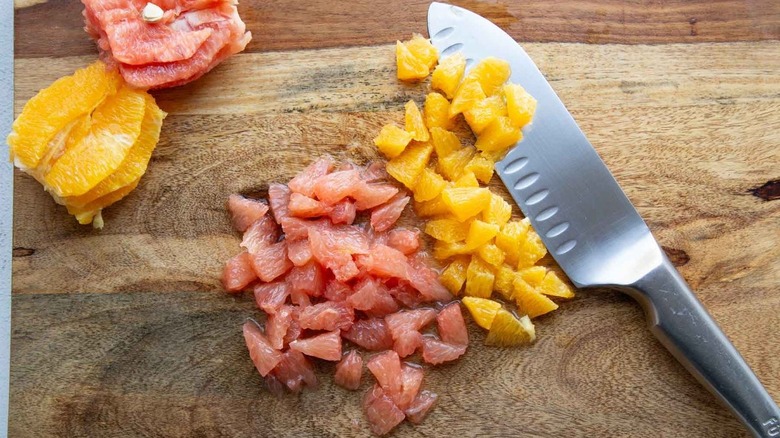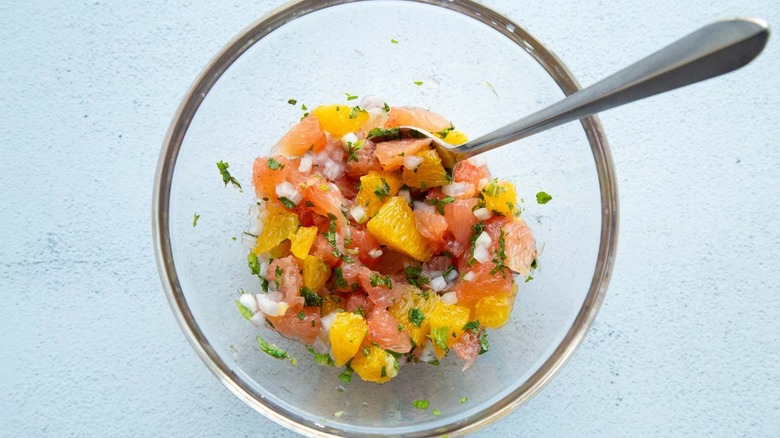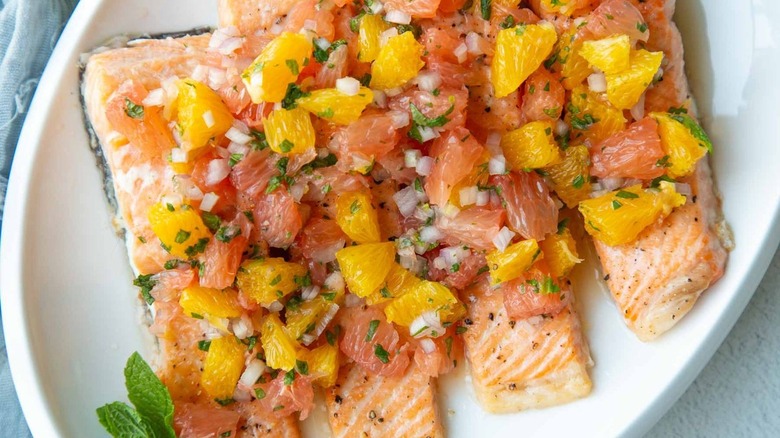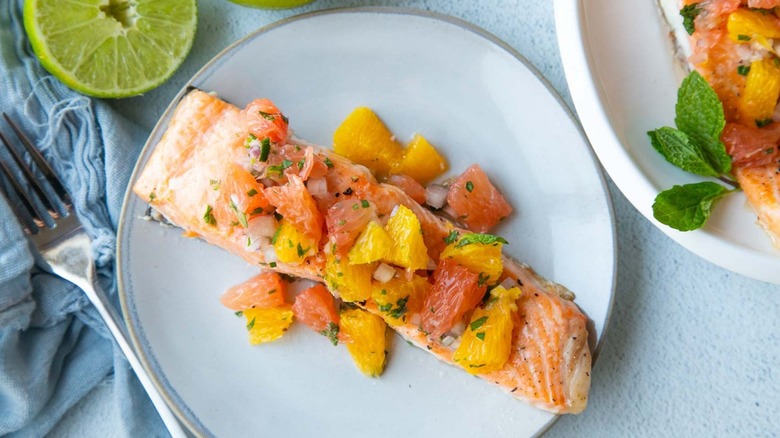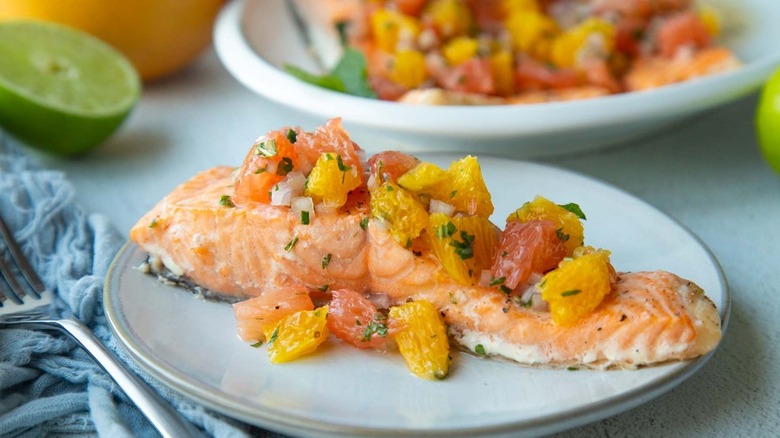Wintry Citrus Salmon Recipe
Citrusy flavors are often associated with summertime, but these versatile fruits are actually at their peak in winter, meaning they're just the thing to perk up your cold-weather cooking. To take full advantage of seasonal citrus, recipe developer Kate Shungu likes to use a combination of fruits to make a vibrant salsa for her wintry citrus salmon, which she calls "the perfect dinner for making winter a little brighter."
Salmon is often paired with lemon, either as a marinade, a sauce, or a slice squeezed over the fish right before eating. Here, however, Shungu uses a unique and refreshingly unexpected blend of grapefruit, lime, and orange. "The acidity of the salsa complements the fat in the salmon," she explains, while shallots add a mild pungency and fresh mint provides a cooling, citrus-complementing flavor. While Shungu chooses to bake this particular dish, this salsa would also go great with salmon cooked in different ways, such as grilled or poached.
Collect the ingredients for this wintry citrus salmon
All you'll need for the baked salmon is the fish itself, plus some salt and pepper to season it. The citrus salsa is made from orange and grapefruit segments, plus some lime juice, shallot, and fresh mint.
Step 1: Turn on the oven
Preheat oven to 375 F.
Step 2: Salt and pepper the salmon
Place salmon fillets on a greased sheet pan and season with ¾ teaspoon salt and ¼ teaspoon pepper.
Step 3: Cook the salmon
Bake for 15–20 minutes, or until the fish flakes easily with a fork.
Step 4: Cut the peel off the orange and grapefruit
Meanwhile, slice off the rind and pith of the grapefruit and orange.
Step 5: Supreme the fruits
Supreme the fruit: Hold the grapefruit in one hand, and with your other hand, cut a slice of grapefruit as close to the membrane as you can. Repeat on the other side of the slice, releasing it from the membrane. Repeat with the remaining grapefruit, then the orange.
Step 6: Chop up the grapefruit and orange
Cut the grapefruit and orange slices into ½-inch pieces.
Step 7: Combine all of the salsa ingredients
In a medium bowl, gently toss together the grapefruit and orange slices, minced shallot, lime juice, and chopped mint. Season to taste with salt and pepper.
Step 8: Top the salmon with citrus salsa, and enjoy
Place cooked salmon on a serving platter and top with the citrus salsa. Serve immediately.
What does it mean to supreme citrus?
Shungu prepares the orange and grapefruit for the citrus salsa by a process called supreming, which involves not only removing the peel and the pith of the fruit, but also the membrane that encases each segment. While the process may be a little more time-consuming and fussy than simply peeling and segmenting the fruit, Shungu assures us that it isn't hard to do and tells us that "you can make the entire salsa (and maybe a side dish!) while the salmon is in the oven."
Supreming is often done because it makes for a more elegant presentation of citrus segments, showcasing the bright colors of the fruit without the white pith. In Shungu's salsa, especially, supreming the fruit also ensures that you're only getting pleasantly juicy bites of citrus with your salmon, without any bits of membrane to stick in your teeth or otherwise interfere with the texture. Since the membrane can be a little bitter, too, supreming also makes for a better-tasting dish.
What's the best way to serve citrus salmon?
With the salsa providing so much flavor, you can keep the sides for this salmon dish as simple as you wish. Shungu says she usually goes with rice or roast potatoes and a green salad, but if you can find some wintertime asparagus (or you're making this meal in spring), the slightly bitter vegetable would help offset the salmon's richness. Lentils, too, are one of the best sides to pair with salmon — a lentil salad with a citrusy vinaigrette would be the perfect complement to the fruity salsa.
Any leftover salmon can be refrigerated for up to 4 days, but it's best to store the fish and salsa in separate containers. Shungu recommends reheating the salmon by baking it for 5-8 minutes at 350 F, then topping it with the leftover salsa after it's warmed up enough to eat. You could also use the salmon (either warm or cold) to top a salad, blending the salsa with some olive oil to make a dressing.
Wintry Citrus Salmon Recipe
Make winter a little brighter with seasonal citrus fruits, including orange and grapefruit, for a simple salsa to serve over this quick and easy baked salmon.
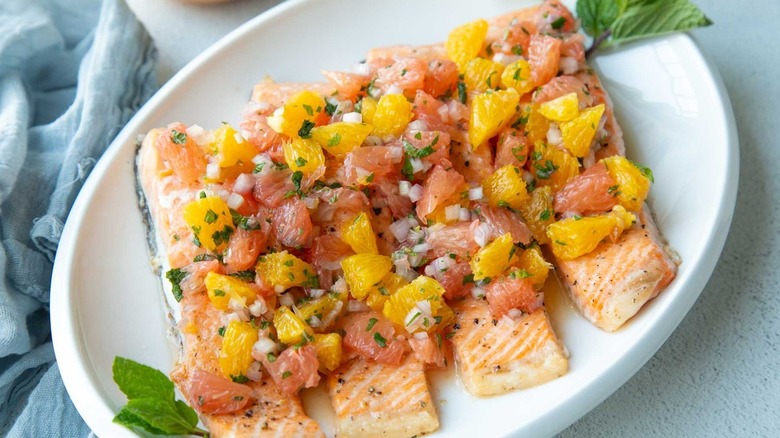
Ingredients
- 4 (6-ounce) salmon fillets
- ¾ teaspoon salt, plus more to taste
- ¼ teaspoon black pepper, plus more to taste
- 1 grapefruit
- 1 orange
- 1 small shallot, minced
- 1 tablespoon lime juice
- 1 tablespoon finely chopped fresh mint
Directions
- Preheat oven to 375 F.
- Place salmon fillets on a greased sheet pan and season with ¾ teaspoon salt and ¼ teaspoon pepper.
- Bake for 15–20 minutes, or until the fish flakes easily with a fork.
- Meanwhile, slice off the rind and pith of the grapefruit and orange.
- Supreme the fruit: Hold the grapefruit in one hand, and with your other hand, cut a slice of grapefruit as close to the membrane as you can. Repeat on the other side of the slice, releasing it from the membrane. Repeat with the remaining grapefruit, then the orange.
- Cut the grapefruit and orange slices into ½-inch pieces.
- In a medium bowl, gently toss together the grapefruit and orange slices, minced shallot, lime juice, and chopped mint. Season to taste with salt and pepper.
- Place cooked salmon on a serving platter and top with the citrus salsa. Serve immediately.
Nutrition
| Calories per Serving | 398 |
| Total Fat | 22.9 g |
| Saturated Fat | 5.2 g |
| Trans Fat | 0.0 g |
| Cholesterol | 93.6 mg |
| Total Carbohydrates | 11.1 g |
| Dietary Fiber | 1.9 g |
| Total Sugars | 8.2 g |
| Sodium | 538.6 mg |
| Protein | 35.7 g |
